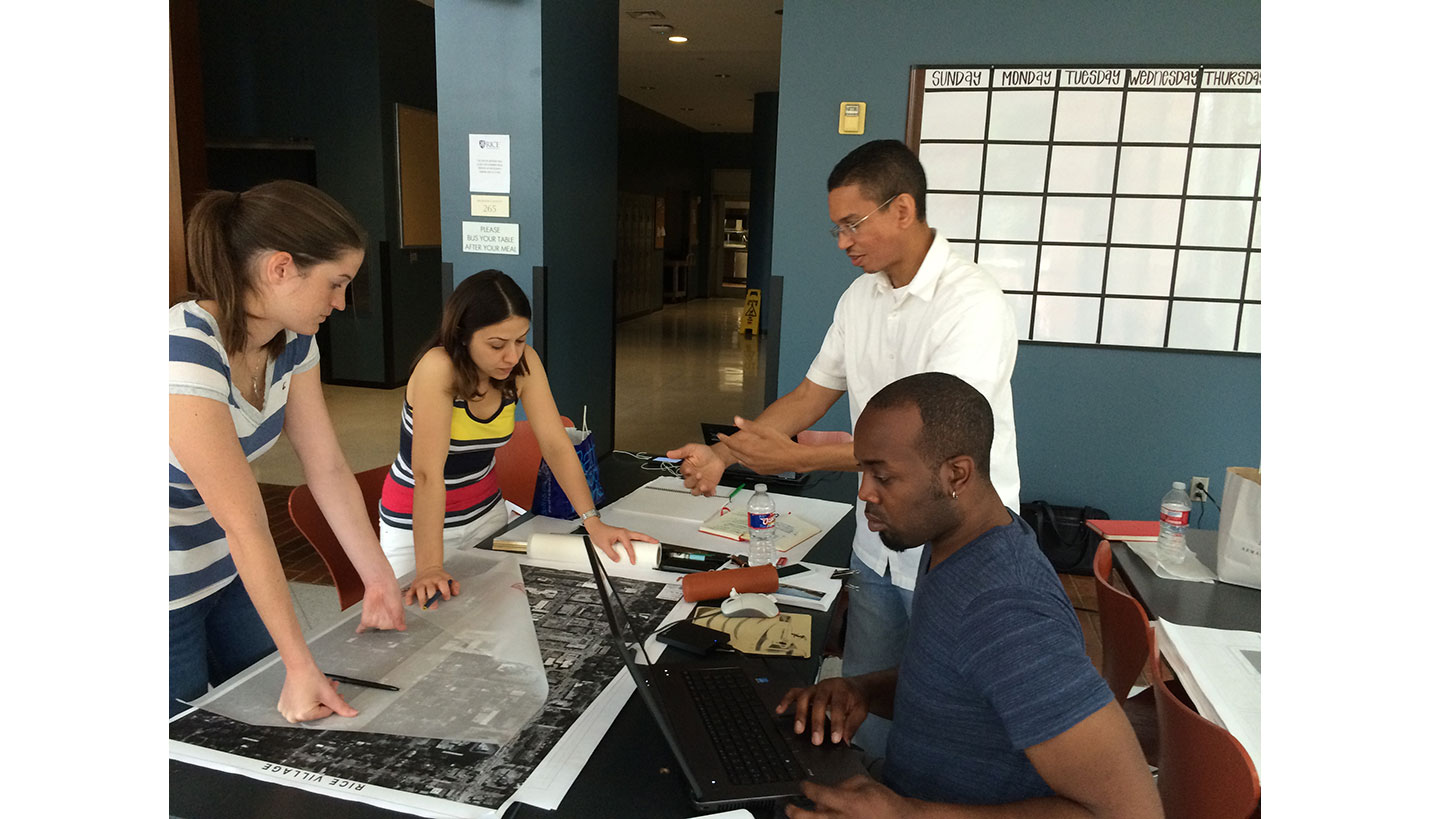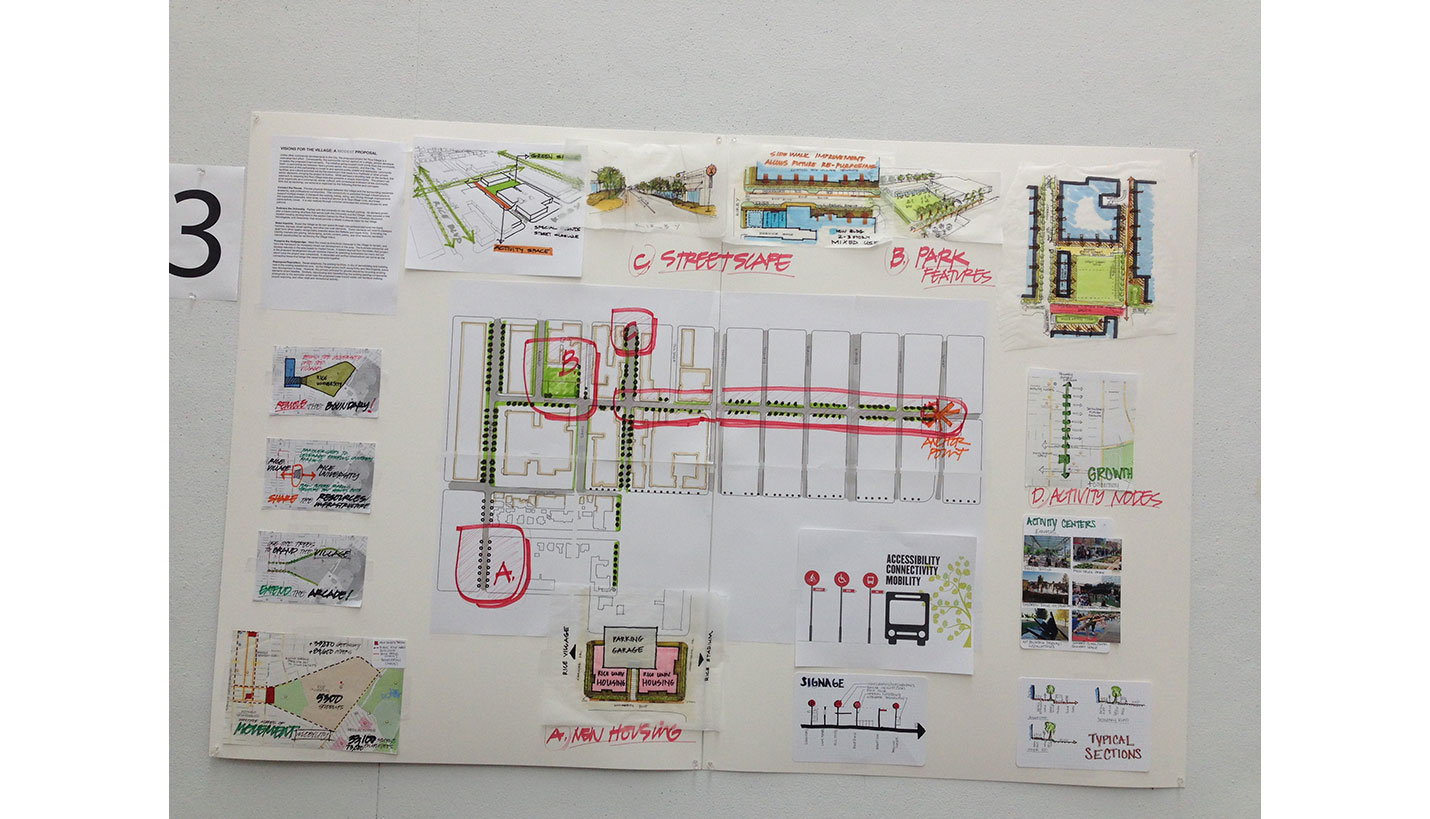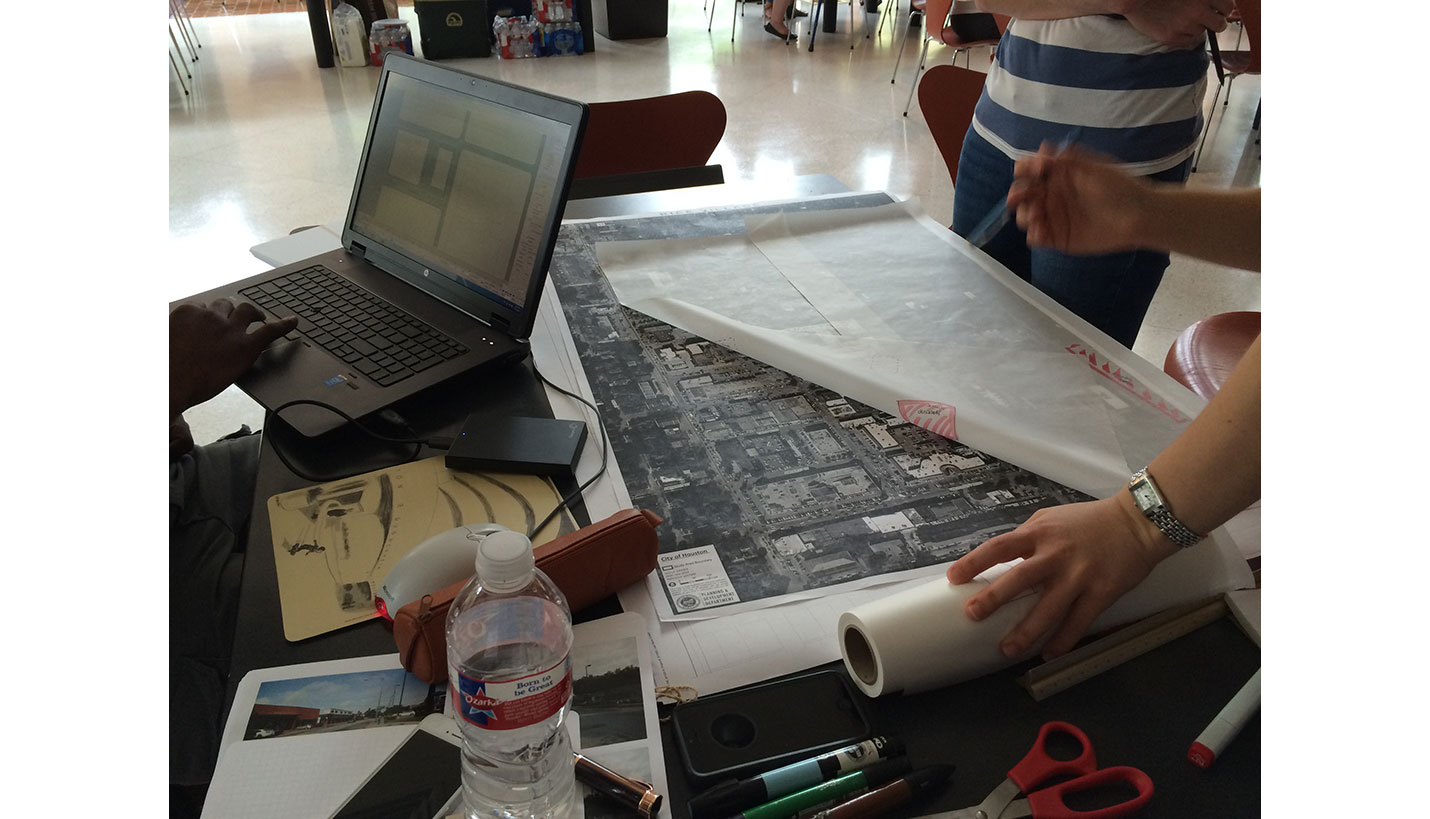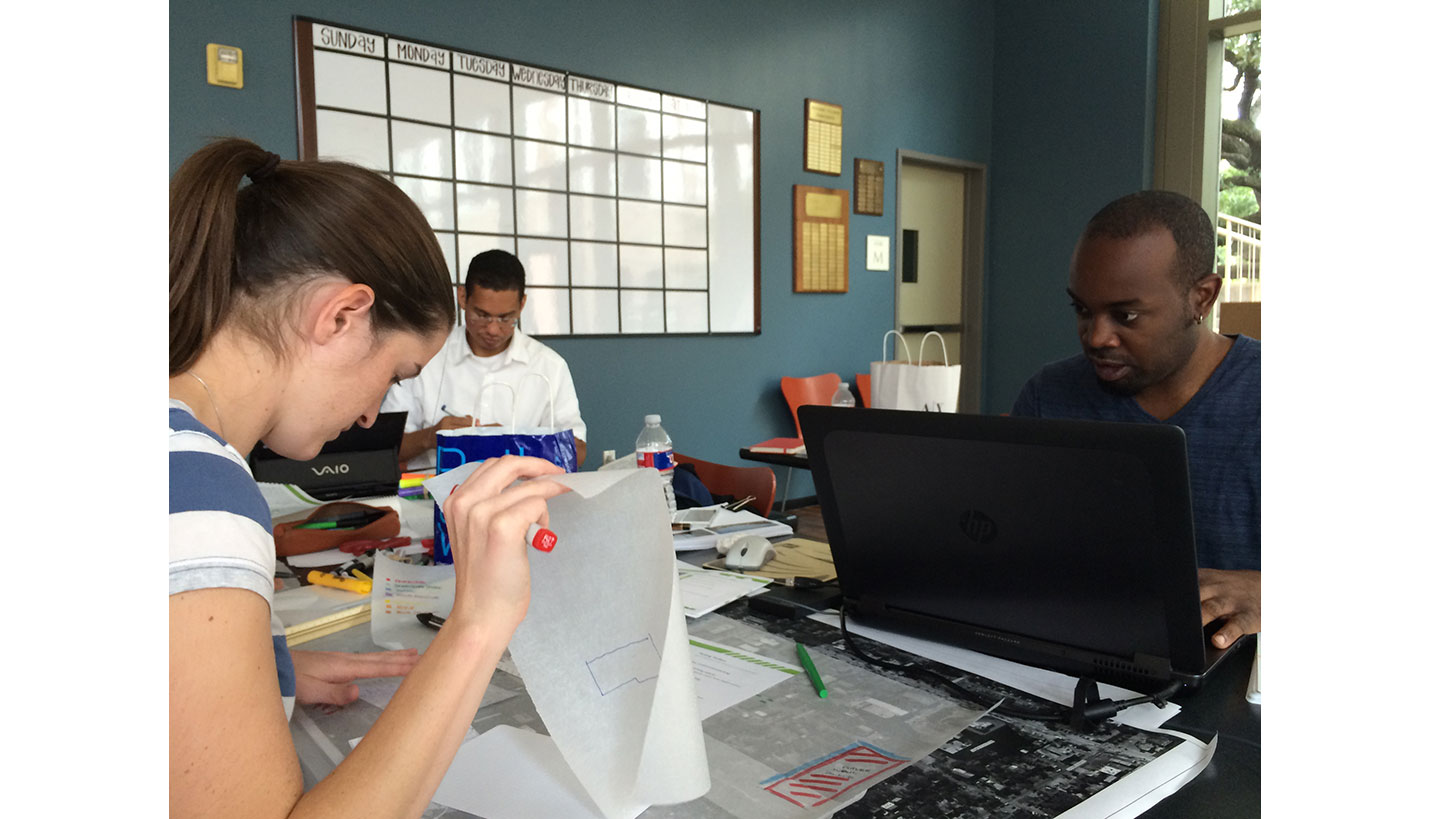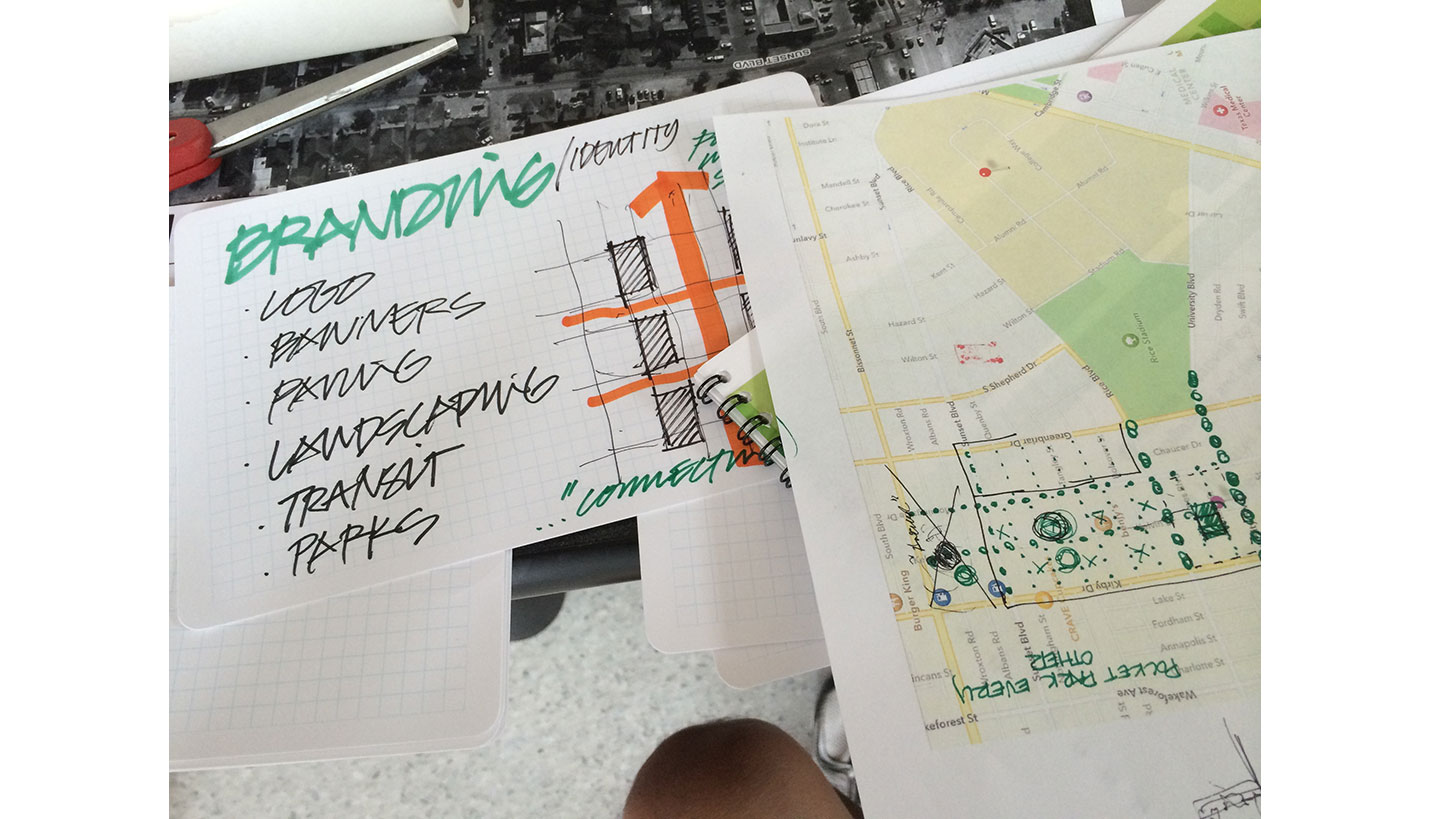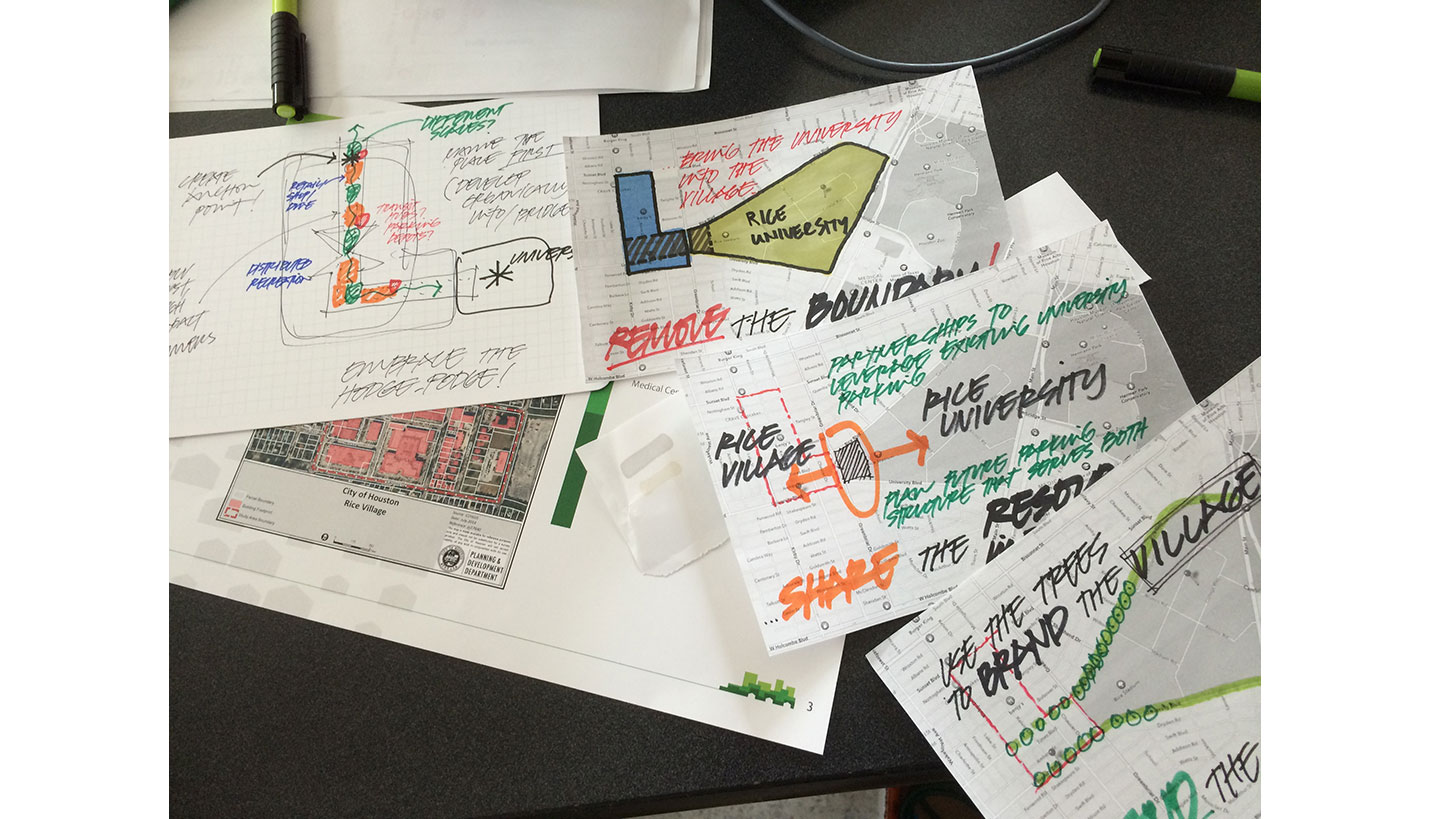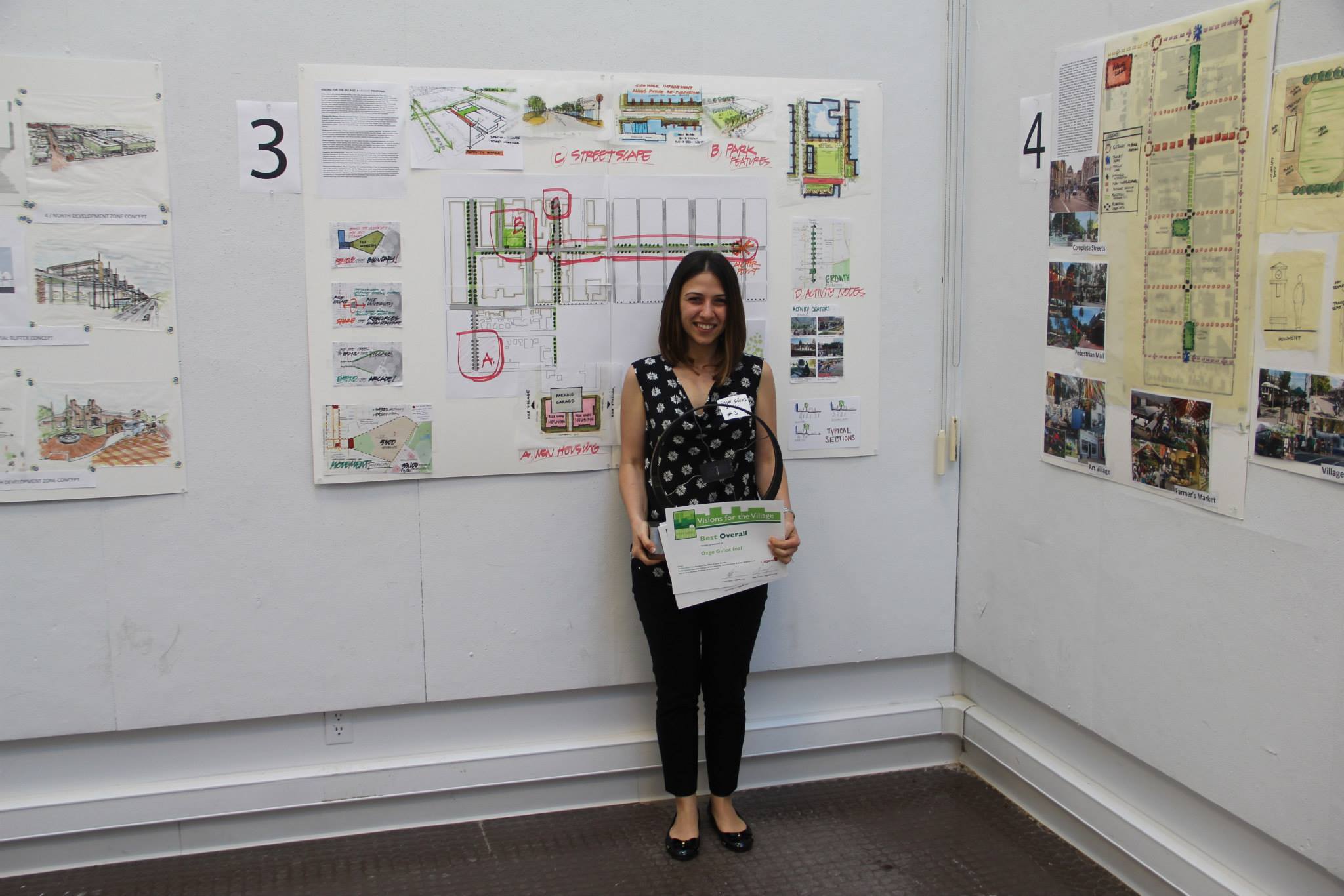#KeepTheHodgePodge: Page Team's Winning Concept for RDA Design Charrette
The Page team of Ozge Gulec Inal, Geri Powell, Noe Ramirez, Lawrence Stewart and Verrick Walker won the “Best Overall” award at the 2014 Rice Design Alliance (RDA) Charrette, “Visions for the Village.” Held on Saturday, August 2, at Rice University, the event was organized by rdAGENTS, the young professionals group of RDA. The charrette drew 16 design teams of up to five members each who worked from 9 a.m. to 5 p.m. to complete their “visions” for Rice Village.
The focus of the charrette was to challenge participants to imagine how Rice Village might evolve along with Houston’s continuing growth and evolution. Widely considered one of the city’s most desirable areas, Rice Village is poised for growth, but continues to have issues with mobility, walkability, and accessibility.
Awards were announced on Monday, August 4, at a reception in Anderson Hall where the results of the charrette were on display.
Key components of our team’s concept, informerly referred to as “Keep the HodgePodge,” are outlined below.
VISIONS FOR THE VILLAGE: A MODEST PROPOSAL
Unlike other commercial developments in the City, the proposed project for Rice Village is a redevelopment effort. Consequently, the community cannot depend on a single, private developer to realize the proposed improvements. The initiative going forward must come from the community itself—a partnership among the private sector, Rice University, and the City. The commitment of this partnership to invest in and operate public streets and sidewalks, community facilities, and cultural activities will be the mechanism that leads to a multitude of other private sector decisions, bringing the project to fruition. While perhaps a daunting task on the surface, this approach to renewing the Rice Village area also presents a unique opportunity. The project can grow organically as a commercial, social, cultural, and recreational extension of the community. With this as backdrop, our scheme is organized by the following themes and concepts:
Connect the Pieces. Provide physical linkages between the Village and the surrounding residential, academic, and professional communities. This connectivity is executed through infrastructure to support multiple modes of transport like walking, biking, riding, and driving—namely, improvements like expanded sidewalks, bike lanes, a local bus service (a la “Greenlink”), and linear parks/activity zones . It is also realized through common amenities like wireless access for area patrons.
Embrace the University. Partner with the University to develop and share resources, like the stadium parking. As demand grows, plan a future parking structure at the stadium site that serves both the University and the Village. Also consider a new student housing development in the section framed by Rice Boulevard, University Boulevard, Morningside, and Greenbriar, that would provide a steady customer base for the Village.
Make Imprints. Brand the Village as its own space through conventional elements like logos, banners, signage, street lighting, and other low cost elements. These elements will need to stand apart from other nearby recognizably branded areas like Bellaire and Upper Kirby. Extending the identity markers into paving, landscaping, activity centers, parks, and other features represent natural opportunities for reinforcing the Village brand.
Preserve the Hodgepodge. Allow the mixed architectural character to the Village to remain, and form the framework for increased mixed-use development in the area. The business enterprise will develop naturally in the area based on market forces. A lesson-learned from the Metro Rail project is that the proposed development should minimize impact to operating businesses (as many did not return once the project was completed). A rebranded and unified infrastructure can serve as the connective tissue that brings the varied elements together.
Repurpose/Reposition. Reuse adaptively the existing facilities, in lieu of demolishing and building new in the existing established core. As the Village grows north along Kirby and Morningside, some new development is likely. However, the primary principle for growth should be recycling existing elements where feasible. Similarly, repurposing and repositioning the existing parking components strategically to the perimeter zones near the proposed mass transit nodes can facilitate walking, people-watching, and other retail-supportive and recreational activity.
For more photos and information visit the RDA Facebook page.
08/06/2014




